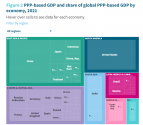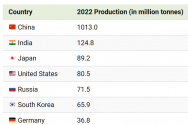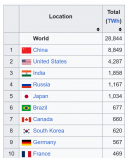I think its in indirect way of saying that 1 Gulf Arab tourist =500 Regular tourists. There is alot of outreach to Saudis in industrials and tourism sector. The other Gulf Emirates dont need that much outreach.
This is about Egypt and its history with textile and how Russia can lower the costs by doing contract manufacturing.
Foreigners have already fallen in love: how Sochi delighted tourists from Bahrain
“Judging by our research, one satisfied Arab tourist brings 500 other tourists to the country, in particular to Russia. Therefore, we expect an increase in tourist flow. Last year, more than seven thousand Arabs visited Russia. This year we plan to count in tens and hundreds and thousands.”
The next delegation of bloggers is expected in mid-May.
Russia plans to increase tourism exchange with Saudi Arabia in 2024
Riyadh hosts the Russian Industries Exhibition
Publication date: 05/28/2024 | 23:22 GMTThis is about Egypt and its history with textile and how Russia can lower the costs by doing contract manufacturing.
At the 15th International business platform for outsourcing in the light industry BEE-TOGETHER .ru in Moscow, the Egyptian light industry was represented by six large-scale enterprises that produce knitwear, children's, men's, women's, sports, denim, outerwear and other clothing.
Nevertheless, Russian customers also consider ARE enterprises as potential contractors. Thus, entrepreneur Elena Radionova , having visited BEE-TOGETHER .ru , said: “We mainly sell on marketplaces, so we are constantly looking for ways to reduce the cost of products without compromising quality, for this purpose we come to the BEE-TOGETHER .ru exhibition every year. This time we were very pleased with the enterprises of China and Egypt. There are plenty of people to choose from to work with. We are now in the process of discussing the details of cooperation . "
The Arab Republic of Egypt (ARE), a country located in Northeast Africa and the Middle East, can be considered a pioneer of the textile industry, as it began to form in the Nile River Delta several thousand years earlier than in most other regions of the world. Of course, the times of the pharaohs are long gone, but even in modern history, Egyptian cotton, a wear-resistant material made from long fibers with an almost silky sheen, is well known on the global market. During the Soviet period, Egypt exported various textile products to Eastern Bloc countries on a large scale. The collapse of the Soviet Union and the Eastern Bloc caused Egypt's textile exports to decline by more than 33% in 1991-1992. As a result, the country changed the direction of exports, so today the main markets are the USA and European countries, with which Egypt has duty-free trade agreements.



